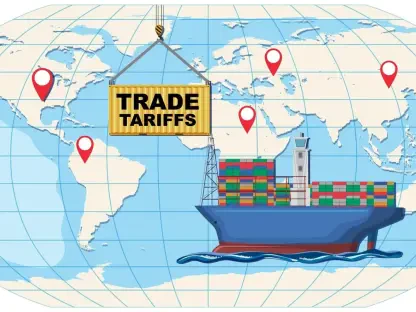Cross-border logistics is a cornerstone of global trade, connecting businesses and ensuring seamless supply chains across international markets. However, this intricate process comes with its own set of challenges that require careful planning, adaptability, and innovative solutions. This article explores the key obstacles in cross-border logistics and presents actionable strategies to overcome them, drawing from the expertise of industry professionals. These insights will help logistics organizations navigate the complex landscape of international transportation and maintain efficient, cost-effective operations.
Regulatory Compliance and Documentation
Navigating Diverse Regulations
One of the most significant hurdles in cross-border logistics is dealing with the varying regulations imposed by different countries. Customs clearance procedures demand precise documentation, including commercial invoices, customs declaration forms, and Bills of Lading. Mistakes in paperwork can lead to costly delays, disrupting schedules and impacting business operations. For example, shipments transiting between the United States and Canada must adhere to stringent documentation requirements, which, if not met, can result in significant delay costs and even fines.
Understanding the specific regulatory demands of each country is crucial to avoid these pitfalls. Engaging in thorough research and maintaining a comprehensive knowledge base about the regulations can provide a solid foundation for smooth border crossings. Moreover, adopting a proactive approach to constantly monitor changes in international trade laws and customs procedures can help companies anticipate and react to new requirements efficiently.
Strategies for Compliance
To mitigate these challenges, it is crucial to invest in expertise by hiring customs intermediaries or in-house specialists who understand regulatory requirements. These professionals can ensure that all necessary documentation is prepared accurately and submitted on time. Leveraging technology to automate documentation processes and reduce human error through customs management software can streamline operations. Automating paperwork not only speeds up the process but also minimizes the risk of errors that can cause delays and added expenses.
Building strong relationships with border agencies and customs officials can also facilitate smoother certification processes. Establishing trust and open lines of communication with these key stakeholders can lead to quicker resolution of any issues that might arise. Additionally, creating channels for feedback and regular updates with customs officials can ensure that logistics companies are always aware of current expectations and any upcoming changes in protocols. This collaborative approach helps in preventing delays and fostering a more efficient logistics process.
Toll Costs and Route Planning
Impact of Toll Costs
Toll costs at key border passages, such as the Blue Water Bridge and the Ambassador Bridge, can significantly affect the economics of cross-border transportation. High toll fees at major crossings can quickly add up, particularly for businesses that transport goods frequently across borders. Efficient route planning is essential to balance cost, efficiency, and delivery timelines, ensuring that shipments arrive on time without breaking the budget. For companies operating on thin margins, managing toll expenses becomes an integral part of maintaining profitability in cross-border logistics.
Furthermore, toll costs are not the only concern; congestion at these critical border points, especially during peak seasons or holidays, can cause severe delays. Infrastructure limitations can exacerbate traffic issues, prolonging wait times, and disrupting schedules. Businesses must navigate these challenges to maintain their competitive edge and ensure timely deliveries. Real-time data and traffic analysis become invaluable tools in this endeavor, enabling logistics planners to make informed decisions about routes and schedules.
Optimizing Routes
Drivers can reduce toll expenses by choosing more cost-effective routes, like Sarnia, which offers lower toll fees compared to other major crossings. Additionally, congestion at border crossings, especially during peak seasons or holidays, can cause delays. Utilizing GPS and traffic monitoring tools to identify less congested crossings and optimal crossing times can help mitigate these issues. Real-time tracking technology allows logistics managers to adjust routes on the fly, avoiding delays and improving overall efficiency.
Another important strategy is to conduct regular route optimization assessments. By analyzing historical data and leveraging predictive analytics, companies can anticipate periods of heavy congestion and adjust schedules accordingly. Implementing dynamic route planning systems that integrate real-time traffic updates can further enhance the efficiency of cross-border logistics. Such systems can reroute drivers based on current conditions, ensuring that goods move swiftly and cost-effectively, even amidst fluctuating traffic patterns.
Security Concerns
Risks and Vulnerabilities
Security is a critical concern in cross-border logistics, with shipments at risk of theft, tampering, or damage, particularly in regions with inadequate security infrastructure. High-value products are especially vulnerable during transit, necessitating heightened security measures. The logistics industry must contend not only with the physical security of goods but also with the potential for cyber threats that can compromise tracking systems and sensitive data. Ensuring robust security protocols is essential to safeguarding shipments and maintaining client trust.
Moreover, the complexity of cross-border logistics adds layers of risk. Different countries have varying levels of security standards and enforcement, which can create vulnerabilities. Coordinating security measures across multiple jurisdictions requires comprehensive planning and constant vigilance. The risk of cargo pilferage, especially during transit and at unsecured stops, demands a multifaceted approach to logistics security. Addressing these risks is crucial for the safe and successful transport of goods across international borders.
Enhancing Security Measures
To enhance security, logistics companies should enroll in pre-clearance programs like FAST or C-TPAT to expedite customs clearance. These programs are designed to boost security while facilitating faster processing times for trusted partners. Partnering with reliable carriers that prioritize equipment security and safety protocols is vital. Carriers with robust security measures, including advanced locking mechanisms and GPS tracking, can significantly reduce the risk of theft and damage during transit. Consistent vetting and evaluation of carrier partners ensure that only those with the highest security standards are engaged.
Investing in comprehensive cargo insurance can further protect shipments and reduce financial losses in case of unforeseen incidents. Insurance policies tailored to the specific risks of cross-border logistics provide an additional layer of financial security. Companies should also implement stringent internal security protocols, such as regular audits and employee training, to ensure adherence to best practices. Embracing advanced technologies like blockchain for secure transaction records and IoT sensors for real-time monitoring of cargo conditions can enhance overall security and transparency in the supply chain.
Communication and Coordination
Overcoming Communication Barriers
Effective communication is essential for coordinating transporters, clients, customs officials, and warehouse teams. Language barriers, time zone differences, and a lack of real-time updates can complicate operations, leading to misunderstandings and delays. The complexity of international logistics demands seamless communication channels to ensure that all parties are aligned and informed throughout the process. Miscommunication can result in incorrect documentation, missed deadlines, and overall inefficiency, hampering the effectiveness of the supply chain.
Additionally, time zone differences pose a significant challenge, especially when coordinating with partners and clients located in different parts of the world. Aligning communication schedules across multiple time zones requires meticulous planning and adaptability. Employing communication technologies that offer real-time translation and documentation sharing can help bridge these gaps. Establishing a standardized communication protocol that all stakeholders adhere to can streamline interactions, ensuring clarity and efficiency.
Improving Communication Systems
Establishing overseas offices to manage nocturnal communication and investing in round-the-clock communication systems can ensure continuous transparency. These offices can handle operations during off-hours, enabling real-time responses to any queries or issues that may arise. Advanced monitoring systems can provide stakeholders with real-time visibility into shipment locations, allowing for immediate updates and proactive problem-solving. Implementing centralized communication platforms can streamline interactions, consolidating all correspondence and documentation in one accessible location.
Hiring multilingual personnel can help bridge language gaps and foster better communication across borders. Employees proficient in multiple languages can facilitate smoother interactions with clients, customs officials, and local partners, eliminating potential miscommunication. Training programs focused on cross-cultural communication can further enhance the effectiveness of the logistics team. By investing in advanced communication technologies and multilingual capabilities, logistics companies can ensure that operations run smoothly and efficiently, regardless of geographical and linguistic differences.
Managing Exchange Rate Fluctuations
Currency Risks
Exchange rate fluctuations pose a challenge for businesses operating across borders and managing multiple currencies, leading to pricing inconsistencies or reduced profit margins. Volatility in currency markets can dramatically impact the cost of goods and services, creating financial uncertainty. Companies that engage in frequent international transactions must develop strategies to mitigate the risks associated with exchange rate movements. Unpredictable currency fluctuations can erode profit margins and disrupt financial planning, making it vital for logistics firms to manage this aspect carefully.
Additionally, dealing with multiple currencies can complicate accounting and financial reporting. Companies must ensure accurate tracking and conversion of exchange rates to maintain financial integrity. The challenge lies in balancing the need for competitive pricing with the necessity of safeguarding profit margins. Effective currency management strategies are essential for maintaining stable and predictable financial performance in cross-border logistics. Proactive measures can help companies navigate the complexities of global trade and protect their bottom line from adverse currency movements.
Mitigating Currency Risks
To mitigate these risks, companies can use financial instruments like forward contracts or options to secure favorable exchange rates. These instruments allow businesses to lock in exchange rates for future transactions, providing certainty and protection against unfavorable currency movements. Negotiating contracts to use a single currency, such as the United States dollar, for all transactions whenever possible can also help stabilize pricing and protect profit margins. Simplifying currency transactions reduces the complexity and risks associated with exchange rate fluctuations.
Implementing robust currency risk management policies and collaborating with financial experts can further enhance a company’s ability to navigate these challenges. Regular monitoring of currency markets and trends enables businesses to identify potential risks and opportunities. By employing a combination of financial hedging strategies and operational adjustments, logistics companies can create a resilient framework for managing currency risks. This proactive approach ensures that they remain competitive and financially stable in a dynamic global market.
Embracing Innovation and Agility
Leveraging Technology
Innovation and agility are crucial in navigating the complexities of cross-border logistics. Companies must optimize operations, leverage technology, and build strong industry relationships to overcome regulatory, cost, congestion, and security challenges. Embracing digital transformation is vital, as advanced technologies like AI, IoT, and blockchain offer significant potential for improving logistics efficiency. These technologies can streamline processes, enhance visibility, and provide actionable insights, enabling companies to make informed decisions and adapt to changing conditions.
Implementing AI-driven automation and machine learning algorithms can optimize supply chain operations, reducing manual errors and increasing efficiency. IoT devices can provide real-time tracking and monitoring of shipments, ensuring that goods are handled properly throughout the journey. Blockchain technology can create a transparent and secure record of transactions, enhancing trust and accountability in the supply chain. By leveraging these innovative technologies, logistics companies can enhance their operational capabilities and stay ahead of the competition.
Future Prospects
Cross-border logistics is essential to global trade, linking businesses and ensuring smooth supply chains across international markets. This complex process, however, presents unique challenges that demand careful planning, adaptability, and innovative solutions. This article delves into the primary obstacles encountered in cross-border logistics and offers practical strategies to overcome them. By leveraging the expertise of industry professionals, these insights aim to assist logistics organizations in navigating the intricate landscape of international transportation. The goal is to help them maintain efficient and cost-effective operations despite the hurdles. Key issues include regulatory compliance, customs procedures, varying transportation infrastructures, and fluctuating tariffs. Through strategic planning, utilizing technology, and fostering strong partnerships, logistics organizations can enhance their ability to manage cross-border operations. This approach not only streamlines processes but also optimizes costs and ensures timely delivery, ultimately supporting global trade’s seamless flow.









